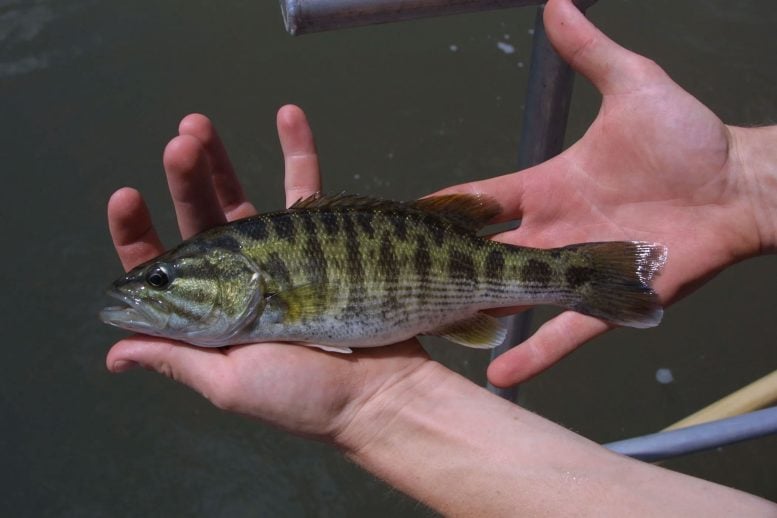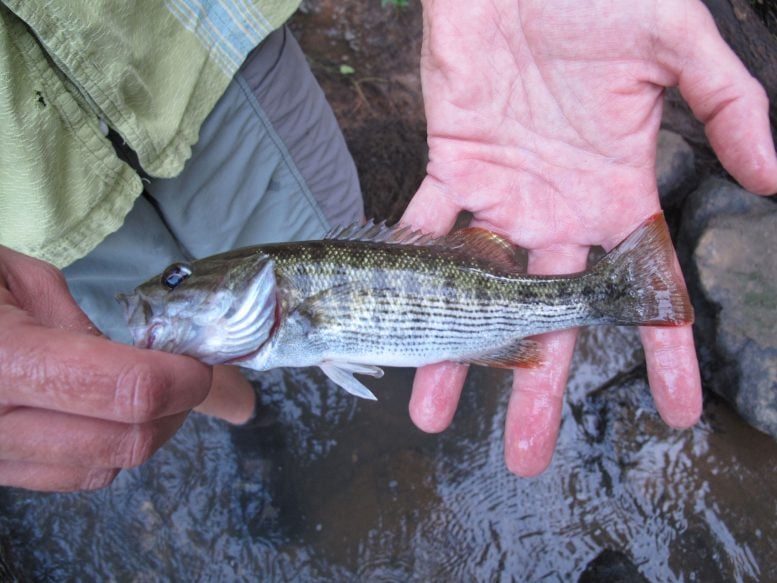
Bartram’s and Altamaha bass, first identified in the 1980s, are now officially recognized as distinct species.
Researchers at the University of Georgia have formally identified two previously unrecognized species of black bass in a newly published study: Bartram’s bass and Altamaha bass.
Though descriptions of the two species are new, sightings of the fish are not. Ecologist Bud Freeman first encountered Micropterus pucpuggy, now known as Bartram’s bass, in the 1980s. A couple on the Broad River showed him the fish in their cooler, and he knew immediately that it was different, offering them $5 for it. Their response? “No, man. We’re taking it home and eating it.”
“That would have been an important specimen,” said Freeman, lead author of the study and a senior public service associate emeritus at the UGA Odum School of Ecology.
Since that early encounter, Freeman and his research team have systematically gathered samples from both species. Bartram’s bass have been recorded at 14 sites within the Savannah and Saluda River basins, while Altamaha bass were collected at 14 sites in the Altamaha and Ogeechee River basins.
New fish have physical, genetic differences
Both species previously were considered synonymous with redeye bass, but each has distinctive physical characteristics. Bartram’s bass are light gold, with patterned dark brown blotches on the sides, a rosy-pink fin and a mottled belly. They have an oval tooth patch in their mouth and carmine-red eyes with a black pupil ringed by a thin gold margin. They can grow to 15 inches long.
Altamaha bass, or Micropterus calliurus, have light gold scales with olive margins, darker brown blotches on their sides and orange on the edges of their fins. They have a small oval tooth patch in their mouth and red eyes with a thin gold margin around the pupil. They can grow to 14 inches long.

But the team members didn’t just note the physical differences — they also documented the genetics.
“It used to be that you’d have to go out and catch the fish, bring it in, count the scales, measure the tail, measure this and that, write a description, and you’re done,” said Mary Freeman, co-author of the study and adjunct faculty at the Odum School. “Now there is also genetic characterization. In this case, there’s genetic characterization of every single individual used to describe that fish to prevent including hybrid specimens.”
Identifying “pure” individual fish required examining mitochondrial DNA and using bioinformatics techniques to compare short DNA fragments in the nuclear genome. More than 100 animals were referenced in the documentation for the two new species, and the full dataset includes 570 individuals, Bartram’s and Altamaha bass, but also smallmouth, largemouth, northern spotted, shoal, Tallapoosa, redeye and Alabama bass.
“You’re laying the baseline for the future,” said Mary Freeman. “Hybridization may result in Bartram’s bass not existing as it has existed, but we’ll know what it was.”
New habitats may lead to hybridization of bass
Bartram’s and Altamaha bass are riverine species that typically occupy pools and runs associated with rocky shoal habitats. They now persist in river systems where that habitat has been altered substantially by sedimentation and fragmented by dams. The introduction of other Micropterus species from outside their native ranges opens the door to hybridization, potentially challenging their future.
“These evolutionarily distinct lineages are important to name,” said Bud Freeman. “In recognizing these species, we recognize how quickly they are becoming lost as extrinsic barriers are breached by human activities.”
He coined the name Bartram’s bass in the ’90s. M. pucpuggy honors the Seminole-Creek inhabitants of Florida, whose chief bestowed the name “Puc Puggy,” meaning “Flower Hunter,” on William Bartram. Bartram’s travels between 1773 and 1776 brought him through the native range of M. pucpuggy, where he described flora and fauna including fishes previously unknown to North American colonists.
Altamaha bass, or M. calliurus, was named later. Calliurus derives from the words call- i, meaning beautiful, and urus, meaning tail.
Reference: “Two new species of Micropterus (Centrarchidae) endemic to Atlantic Slope river drainages in Georgia, South Carolina and North Carolina, U.S.A.” by Byron J. Freeman, Mark C. Scott, Kelly N. Petersen, Natalia J. Bayona-Vásquez, Andrew T. Taylor, Bryson G. Hilburn, Mary C. Freeman and John P. Wares, 19 August 2025, Zootaxa.
DOI: 10.11646/zootaxa.5683.1.3
Funding support for this project was through a Competitive State Wildlife Grant to South Carolina Department of Natural Resources and Georgia Department of Natural Resources.
Never miss a breakthrough: Join the SciTechDaily newsletter.